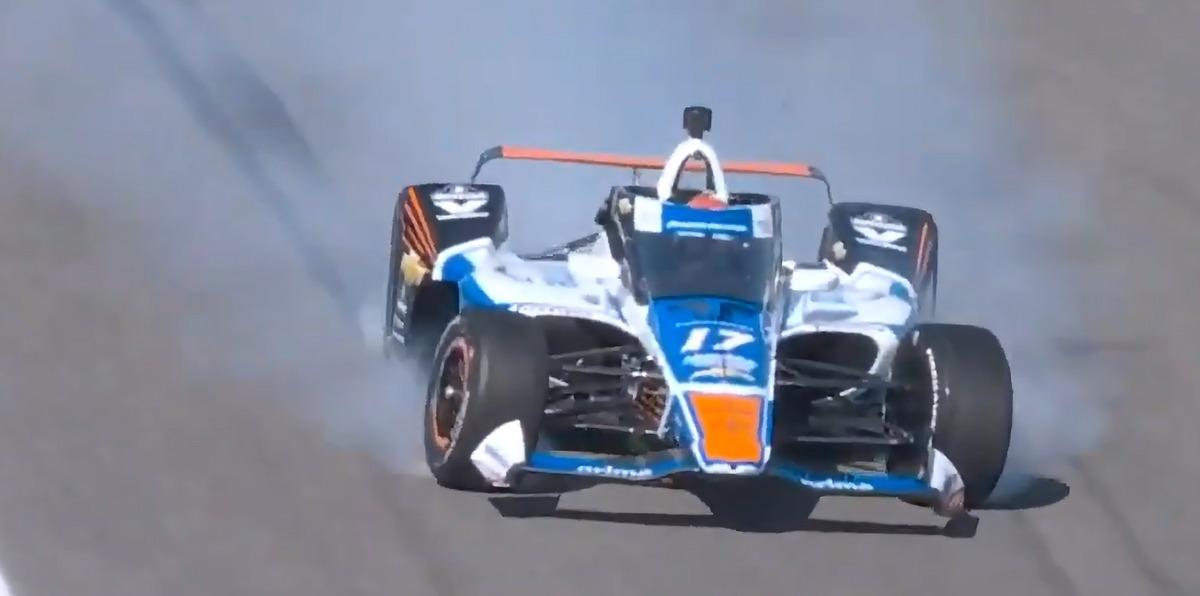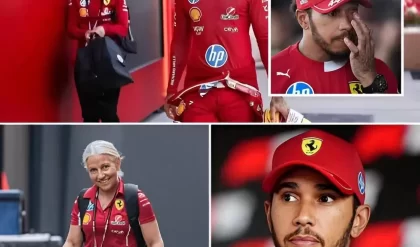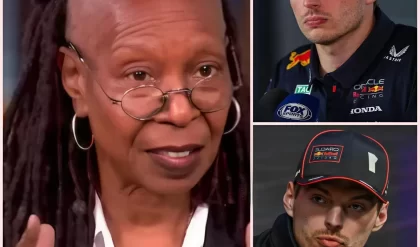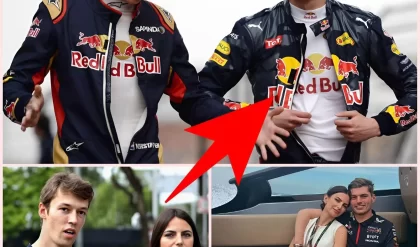Kyle Larson’s Indy 500 Dreams Dented by Shocking Crash, Raising Stakes for 2025 Double Attempt
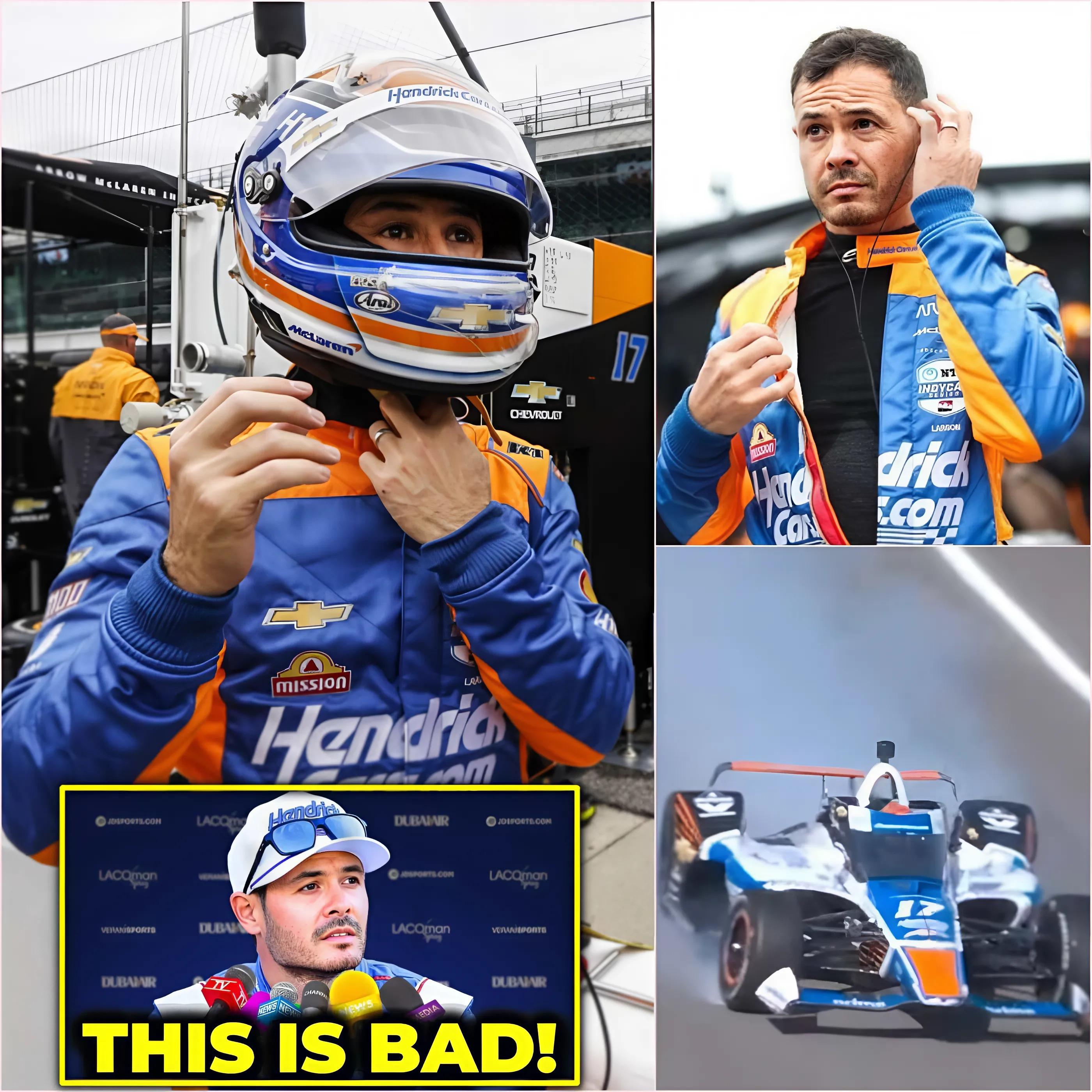
Kyle Larson’s quest to conquer “The Double”—racing the Indianapolis 500 and NASCAR’s Coca-Cola 600 in a single day—has hit a turbulent snag after a dramatic crash during Indy 500 open testing on April 24, 2025, at Indianapolis Motor Speedway. The NASCAR star, piloting the No. 17 Arrow McLaren Chevrolet, suffered his first IndyCar crash in a qualifying simulation, slamming into the Turn 1 safer barrier due to severe understeer before sliding into Turn 2. The incident, which damaged the car’s right front suspension, has sparked concerns about Larson’s preparation for the May 25 double, a feat only Tony Stewart has fully completed. As Larson brushes off the setback with characteristic optimism, the crash underscores the immense challenges of mastering IndyCar’s unforgiving machinery, casting a spotlight on his high-stakes 2025 campaign.
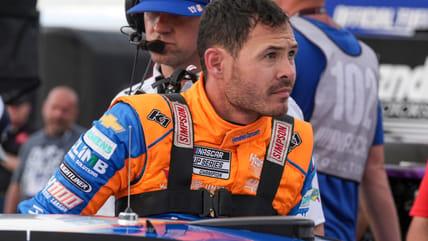
The crash occurred as Larson pushed the limits during a high-speed qualifying run, grappling with a car that felt “tight” and prone to understeer—a handling issue where the front tires lose grip, preventing sharp turns. “I got really tight through Turn 1 and ran out of space,” Larson explained post-crash, noting the issue persisted from Wednesday’s session but was amplified by Thursday’s higher boost settings, which saw speeds climb to 232.565 mph, nearly 12 mph faster than the previous day. The added weight of IndyCar’s new hybrid system, introduced since Larson’s 2024 debut, further altered the car’s balance, catching the 2021 NASCAR champion off guard. After being cleared at the infield medical center, Larson remained unfazed, stating, “I’m happy to crash my first IndyCar and live through it.” His candid reflection highlighted a silver lining: the crash provided critical insight into IndyCar’s wall impacts, which he found less jarring than expected, akin to NASCAR incidents.

Larson’s 2024 Indy 500 debut was a masterclass in adaptation, earning him Rookie of the Year honors with a fifth-place qualifying and a top-10 run until a pit-road speeding penalty relegated him to 18th. That year, rain delays thwarted his double attempt, as storms delayed the Indy 500 by four hours and halted the Coca-Cola 600 after 249 laps, leaving Larson stranded in Charlotte without turning a lap. The 2025 crash, however, introduces new hurdles. The Arrow McLaren team opted not to repair the car for the afternoon session, prioritizing thorough fixes at their shop, which limited Larson’s track time. With only 11 months since his last IndyCar outing, Larson admitted to feeling “rusty,” struggling with small details like dashboard setup and button navigation, compounded by his reluctance to use simulators—a choice that contrasts with modern racing’s reliance on virtual training.

Despite the setback, Larson’s team remains confident. Lead engineer Mike Pawlowski noted Larson’s improved comfort compared to 2024, describing the difference as “night and day.” The crash, some analysts argue, could prove beneficial, revealing the car’s limits and sharpening Larson’s instincts for May’s race weekend. Others caution that his aggressive, high-line driving style—effective in NASCAR but risky in IndyCar’s sensitive chassis—may require refinement. The incident, alongside a similar crash by two-time Indy 500 winner Takuma Sato, underscores the razor-thin margins at Indy, where speeds amplify every misstep. As Larson shifts focus to NASCAR’s Talladega race before returning for Indy 500 practice on May 13, his resilience and adaptability will be tested. A successful double, or even an Indy 500 win, would etch Larson’s name among racing’s elite, joining his 2024 Brickyard 400 triumph. With Hendrick Motorsports prioritizing the Coca-Cola 600, the stage is set for a thrilling redemption arc—or a cautionary tale of ambition meeting Indy’s unforgiving walls.
